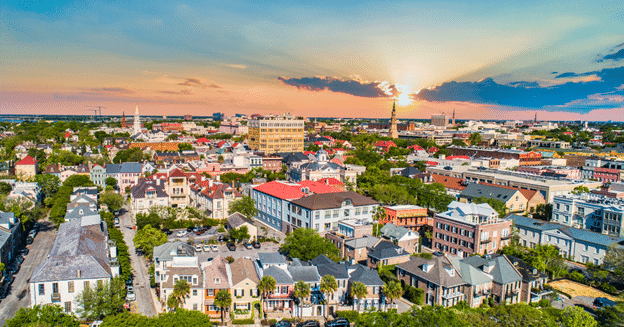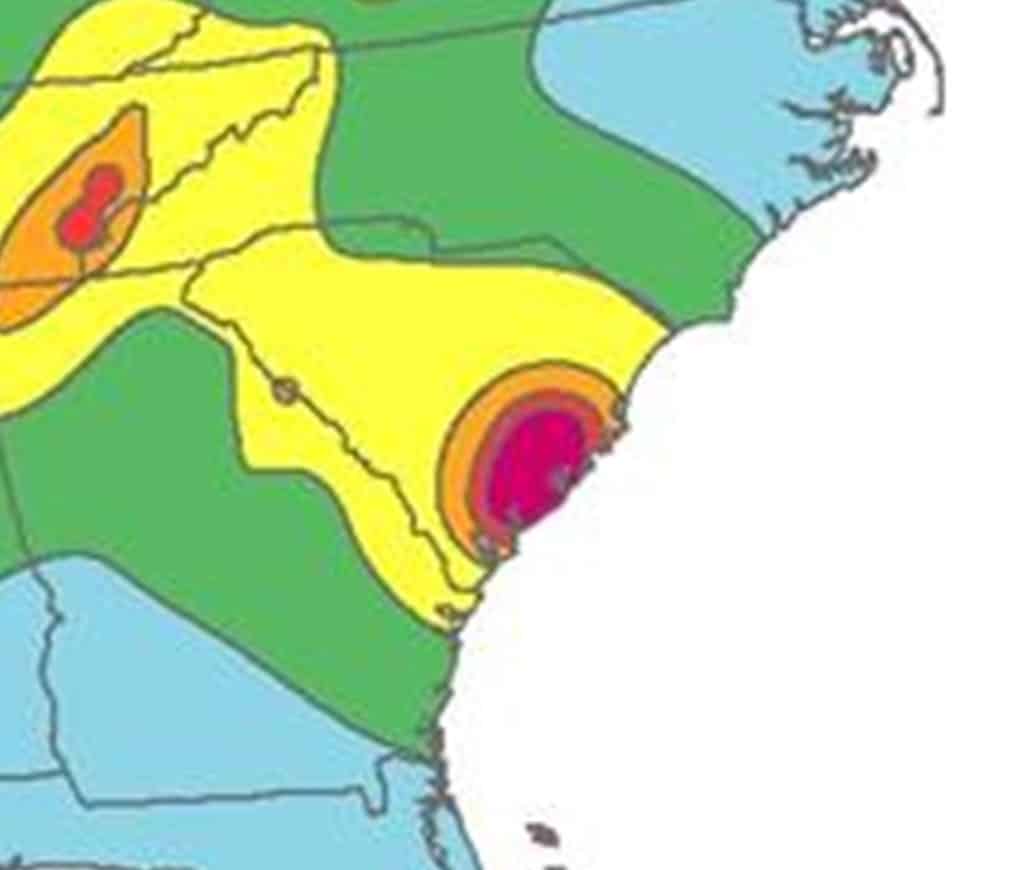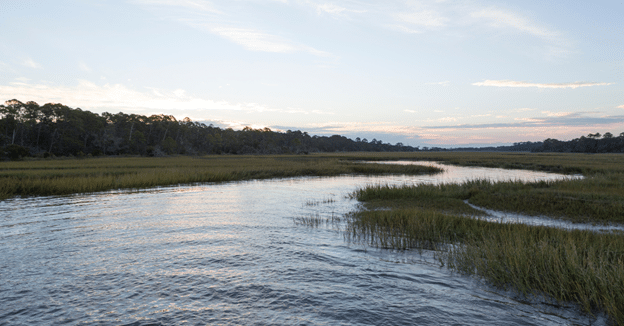October 23, 2024
The picturesque landscape of South Carolina’s Lowcountry might evoke images of serene marshlands, historic plantations, and charming coastal towns. Yet beneath this tranquil surface lies a dynamic geological setting that demands careful consideration, especially in terms of seismic activity and its implications on geotechnical engineering.

Understanding Seismic Activity

USGS 2018 Long-term National Seismic Hazard Map
While South Carolina isn’t as notorious for seismic events as its West Coast counterparts, it’s not immune to tremors. The earthquake risk for the southeastern United States, including South Carolina, is dominated by the Charleston Seismic Zone. Named after the city where a significant earthquake struck in 1886, this zone is the source of the greatest earthquake risk for most of South Carolina, North Carolina, and Georgia.
Geotechnical Considerations
Understanding the geological makeup of the Lowcountry is crucial for infrastructure development and land use planning. The region’s geotechnical considerations are influenced by its unique blend of coastal plains, marshes, and river deltas. Read more about earthquake design considerations.

- Soil Composition: The Lowcountry’s soil composition varies, ranging from sandy soils along the coast to clay-rich soils further inland. These diverse soil types react differently to seismic activity, impacting building stability and foundation design.
- Water Table Dynamics: The proximity to the coast and intricate network of rivers and estuaries means that water table dynamics play a significant role in geotechnical engineering. Seismic events can potentially trigger liquefaction in saturated soils, leading to ground instability and potential structural damage.
- Infrastructure Vulnerability: The region’s historical architecture and urban development pose unique challenges in retrofitting existing structures to withstand seismic events. Balancing preservation efforts with modern safety standards requires innovative engineering solutions tailored to the Lowcountry’s specific needs.
- Coastal Erosion: Beyond seismic considerations, the Lowcountry grapples with coastal erosion, exacerbated by factors such as sea level rise and storm surges. Geotechnical strategies for shoreline protection and land conservation intersect with seismic resilience efforts to safeguard communities and ecosystems.
S&ME Projects
More information on S&ME geotechnical services can be found here.
South Carolina
As part of the KCI team, S&ME performed geotechnical explorations along the entire project corridor to characterize the subsurface for the bridges and roadways. The field exploration consisted of soil test borings (STB), cone penetration test (CPT) soundings, seismic cone penetration test (SCPT) soundings, dilatometer test (DMT) soundings, bulk soil (BS) sample collection, and Multi-Channel Analysis of Surface Waves (MASW) testing. Over-land, barge-mounted, and amphibious drilling platforms were utilized to complete the exploration. Multiple SCDOT certified Disadvantage Business Enterprises (DBE) were utilized in our field exploration program.
S&ME also performed a site-specific response analysis to evaluate the seismic hazard and the risk of soil liquefaction and impact on the proposed bridges was determined. Liquefaction mitigation design was accomplished using methods adopted from Caltrans (California DOT) and ground improvement where needed.
Dockside Condominium Seismic Evaluation
Charleston, South Carolina
Project consisted of review of existing geotechnical information and collection of additional CPT data and downhole shear wave velocity measurements to assist the structural evaluation of an existing condominium complex which includes an approximately 20-story main tower surrounded by 2-story townhome buildings at the plaza level elevated over asphalt parking. The seismic evaluation was in accordance with ASCE 41-17, and we were requested to perform a seismic site-specific response analysis (SSRA) and evaluate the seismic geological hazards listed under Section 8.2.2. Our SSRA was based on the BSE-1E and BSE-2E hazards which correspond to a 20% probability of exceedance (P/E) and 5% P/E in 50 years, respectively.
Client: Dockside Association, Inc. c/o SKA Consulting Engineers, Inc.
